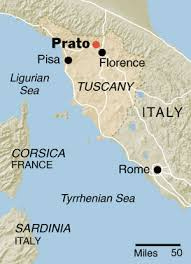So, if you haven’t read my last post or watched my pt.1 video on this topic, I highly suggest you do because I will be referencing a-lot from my previous commentary pieces. Also if you have not watched the documentary (on HBO max and other streaming platforms) I suggest that you do, and a strong Trigger Warning for those of you going in blindly.
Fast fashion has ultimately become a staple for the average American (we will be looking at this through a U.S. context. And although Brandy Melville proudly wears the label of “one size fits most” and shows it is made in Italy, it is still a fast fashion company and is equivalent to that of leading fast fashion competitors such as SHEIN, Fashionnova, Forever 21 etc.
Yes,it is still Fast fashion even though it is not made in China.
I think the west has a lot of skewed perceptions of what is deemed high quality and what is considered “Cheap”. However, the reason China ultimately gets a bad rep is because of its textile industry where they heavily exploit (teetering on the border of modern day slavery). We have seen the constant documentaries, insiders footage, and every instagram infographic of how much SHEIN contributes to the pollution of our planet. Even other fast fashion retailers like the ones mentioned earlier are not nearly as bad (but yes still bad) as SHEIN. It is because of the rate that SHEIN is able to produce with micro trends almost in half the time of normal seasons and trends. It is so hard to keep up.
So when people see Brandy Melville and see the “Made in Italy” tag they automatically assume it is “higher quality”. The prices of Brandy Melville are not replicating designer prices but they definitely are NOT she-in prices despite it being made practically the same way.
Brandy Melville manufactures its clothes in a small town of Prato, Italy. We learn that they have a lot of Chinese textile manufactures and have a very concentrated demographic of Chinese in this area of Italy which become a source for many brands who want to have the “Made in Italy” tag without the average made in Italy cost. So yes, these are in fact sweat shops in Italy.
The dichotomy of sweatshops being in Italy while the Italians are known for “Craftsmanship” and have some sort of designer stigma around it for being better quality, Brandy Melville uses that to their advantage because many people cannot grasp that there could possibly be sweatshops in a European country like Italy
The xenophobia that Americans have really shows itself here because of we equate the quality of a country such as China to cheapness. This is due to only seeing companies like SHEIN and its competitors being exposed on social media. There are sweatshops every where. Yes, even the US. I have been to the fashion district (LA) many times and have seen the conditions that these seamstresses have to be in. Poorly lit and ventilated, long hours, and forget about a good pay for their skills. They are in New York, and yes of course in developing countries where the regulations are looser and not taken seriously.
In the Brandy Melville documentary, we see one country (out of many developing countries) that have been impacted by the fast fashion epidemic. It was so alarming to see these women carrying pounds of textiles on their heads and even more alarming when they explained how it basically crushes their neck and causes spine problems.
The pounds and pounds of clothing that people have to go through is just incomprehensible. Some people were interviewed and one of them commented how the clothes being sent have become such terrible quality that you can’t even really use or resell it. Everything is just covered in clothes and then we get to the ocean where there is cause for concern with how the microfibers do not break down and get in the water.
Just mounds and mounds of soggy textiles with brands you have probably heard of or currently have in your closet. Disney brand sweaters, papaya, and maybe even authentic Dolce and Gabbana slides. Regardless of authenticity or not it ended up in the waters of marine life which is often what land up in people’s fish nets and markets.
Is there an actual solution to this? (IMO) yes and no.
I think every fashion blogger and sustainability activist has made every aesthetic instagram infographic possible to try to expose the fast fashion industry but they always give the same “solutions”. The solutions are pretty limited which often include either ONLY buying thrift store clothes or ONLY buying sustainable brands.
Buying ONLY from thrift stores may be fine for those who aren’t plus sized, which leaves plus-sized people to feel like they are again being excluded. The latter is buying ONLY sustainable brands which to be quite honest and ironically is not even sustainable for the average person.
We are in a housing crisis and the cost of living is ever increasing causing people to be more frugal. However, we still want to be part of the influencer culture that is fast - fashion to create this facade to help us escape the troubles and worries of every day life.
We want this pseudo rich lifestyle consuming with no limits or boundaries. I think that the best thing we can do is be mindful. We should be mindful of how much we are consuming, and ask ourselves why are we consuming this much? However, I think as long as there are influencers with their excessive hauls where we want to live vicariously through them, there will always be this nagging feeling that you need to have that shirt. Or if you just get those shoes you will get more likes, views, etc. This is the same trap that I have fell in being a small content creator myself.
I see these other influencers tall, skinny with millions of followers doing the bare minimum of just being tik tok pretty and getting the latest viral body snatching dress.
It is so easy to get sucked into this mindset, and we need to reverse it. I hope to see more content creators show how they style things they already have. Maybe more anti-hauls or favorites from their closets. Does this solve the issue entirely? No. It doesn’t and same may think it is for nothing, but I would rather know that I did my part while celebrities like Taylor Swift deplete the ozone layer with a 15 minute trip to whatever part of town she is trying to get to.










